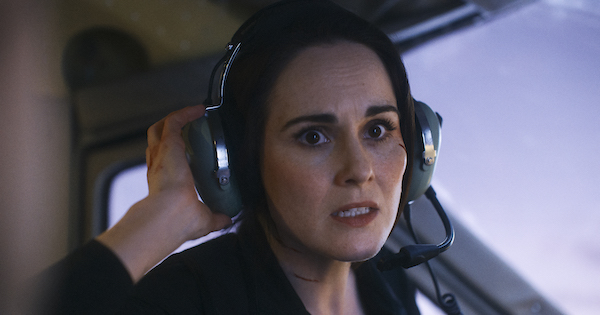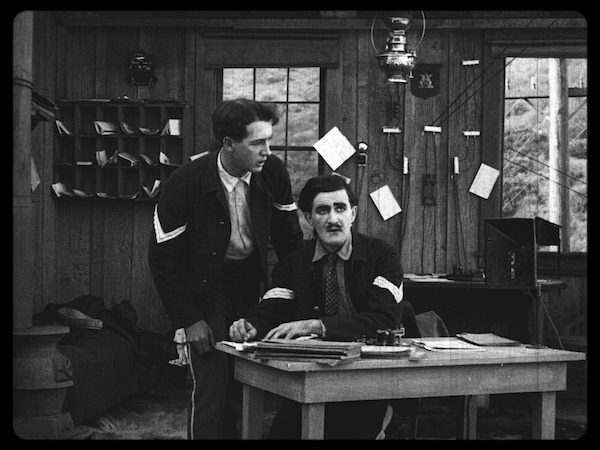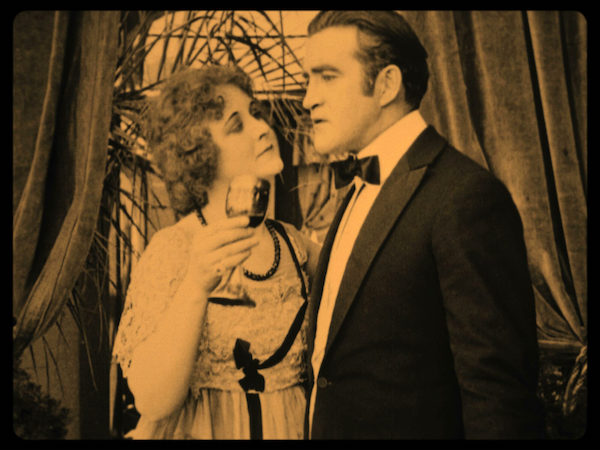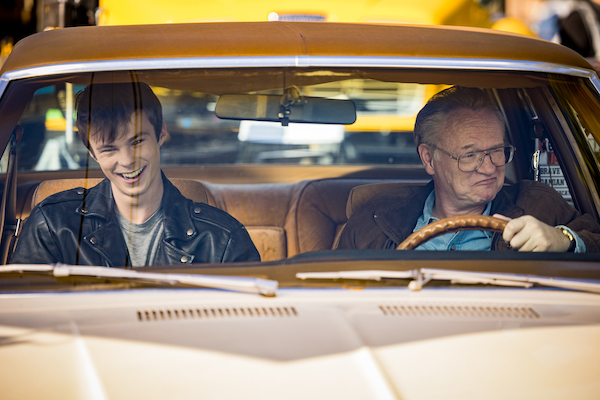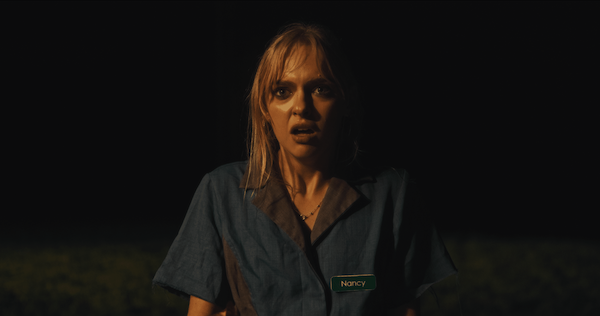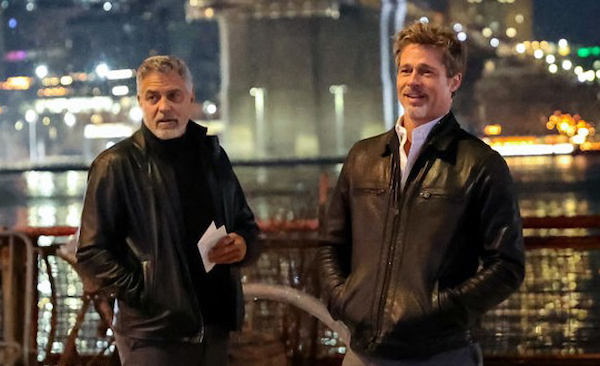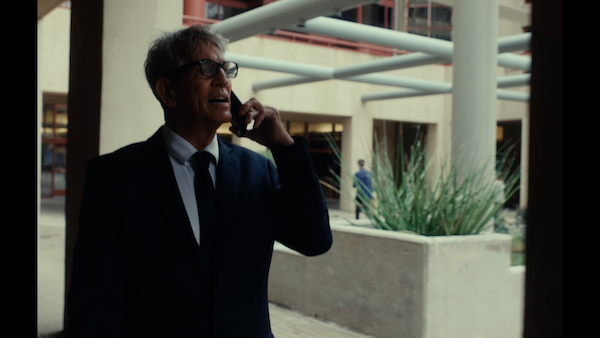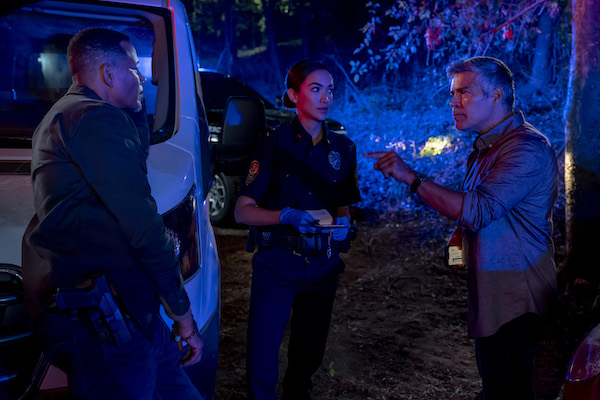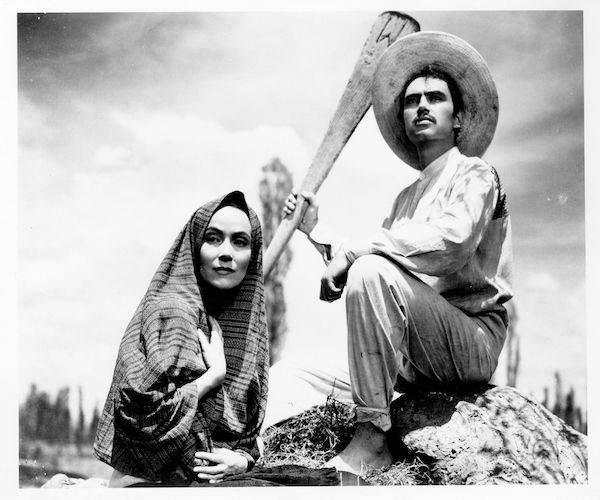
MoMA’s annual To Save and Project not only screens significant film preservation titles, it also showcases the museums, archives, and organizations that select what titles will be restored. Prominent among these are MoMA itself, the Library of Congress, EYE Filmmuseum, the BFI, Cinémathèque Française, and the Film Preservation Society.
Recent years have seen a shift from institutions to individuals as financing has become more difficult. One of the pioneers in individual efforts is Milestone, a company run by Dennis Doros and Amy Heller. Their most recent project, The Annihilation of Fish, brings to the public a key work by filmmaker Charles Burnett.
Ben Model is a familiar figure to MoMA audiences as a piano accompanist for silent films and for his research with Steve Massa in silent film comedy. Through his Undercrank Productions, Model has also released over two dozen titles to home and theatrical markets. Many have been crowdsourced through Kickstarter. Both The Craving and The Post Telegrapher in this year’s TSAP were Undercrank releases.
The San Francisco Silent Film Festival helps finance outside restoration efforts in addition to preserving titles through its offshoot, the San Francisco Film Preserve, currently restoring Victor Fleming’s Hula, among other works. Among their previous releases: the railroading adventure The Signal Tower; the starkly adult Behind the Door; and the “Baby Peggy” short Peg o’ the Mounted, screened at TSAP on January 24.
The festival also featured one of their major projects, The White Heather, restored in conjunction with Eye Filmmuseum. This 1919 feature was directed by Maurice Tourneur under his own production company. Born in France, Tourneur was an actor before finding work as a film director. He moved to New York to work for Éclair. Titles like The Wishing Ring and The Blue Bird were both commercial and artistic successes.
The White Heather was based on an 1897 play about wealthy cads and exploited women. Angus Cameron (Holmes Herbert) fathers a child with housekeeper Marion Hume (Mabel Ballin) while pursuing marriage with a wealthy aristocrat to hide how he has defrauded investors.
Marion’s father James Hume (the sepulchral Spottiswoode Aitken) brings Cameron the court, but the judge rules against him because Marion can’t produce a marriage certificate, lost when her honeymoon yacht sank.
Cameron destroys James Hume financially, leading to his death. Marion and her son are left penniless. It’s up to Cameron groundskeeper Dick Beach (future star John Gilbert) and rich hanger-on Alec (leading man Ralph Graves) to rescue Marion.
Tourneur’s fluid visual style carefully carries viewers through shifting perspectives, each edit swiftly advancing the narrative. He is adept at switching locations, introducing flashbacks, finding intimate gestures within large-scale scenes, and using expressive lighting for psychological insights.
No one could make sense out of a storyline that includes shepherds, brothels, stock markets, brigands, underwater salvage, courtrooms, fox hunts, banquets, sleazy lawyers, and a sort of speakeasy prison with trap doors. Tourneur gives it a go, presenting each far-fetched coincidence and improbable plot twist with gravitas. The result is an entertaining piece of escapist pulp.
This year’s TSAP included features by two of the more important directors from Mexico’s golden age of film: Emilio Fernández (María Candelaria) and Roberto Gavaldón (Adventures of Casanova). The juxtaposition between the two directors—Fernández looking to a glorious pre-colonial past of indigenous supremacy, Gavaldón trying to negotiate with Hollywood’s increasing cultural dominance—captures the struggle to maintain personal vision in an impersonal industry.
Fernández’s life is often described as “colorful.” A political exile, he moved to California, where assorted odd jobs led him to extra and stunt work in Hollywood. Returning to Mexico during an amnesty, he became an actor, screenwriter, and then director. Strongly influenced by Eisenstein and Murnau, he built a repertory company that included actor Pedro Armendáriz, cinematographer Gabriel Figueroa, and writer Mauricio Magdaleno.
Dolores del Rio, a star in Hollywood, returned to her native Mexico to play María Candelaria. She’s joined by Armendáriz as Lorenzo, a noble peasant farmer, and Miguel Inclan (another Fernández favorite) as the evil Don Damian. His inability to bed Candelaria leads to increasingly grotesque melodramatic twists. He holds back malaria from the couple, leading to Candelaria’s serious illness and to Lorenzo’s imprisonment for ten years for stealing a bottle of quinine.
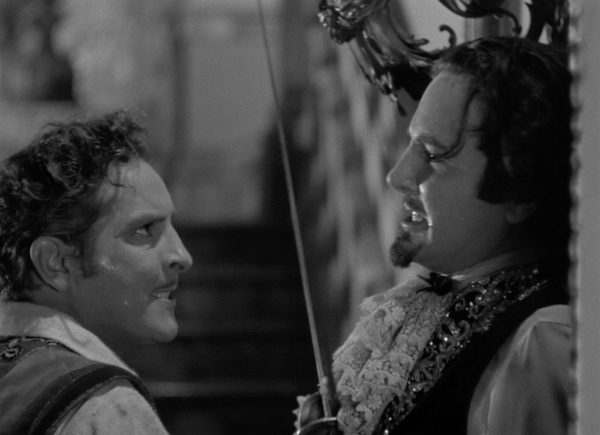
Despite the efforts of a tolerant priest and a progressive doctor, Candelaria is stoned to death by backward villagers because she posed for a nude portrait. It doesn’t matter that the artist used a body double: the beauty and nobility of the indigenous can only be met with hostility in the modern world.
Fernández, Armendáriz, and Figueroa would go on to work on The Pearl and John Ford’s The Fugitive, works of dour beauty and heavy-handed determinism.
Gavaldón was more commercially successful than Fernández and even their contemporary Luis Buñuel. His dark, cynical vision may have been more in tune with audiences than the insistent machismo and nationalism of Fernández, or the casual cruelty of Buñuel.
Gavaldón had a long relationship with Arturo de Córdova, the star of Adventures of Casanova. It’s one of two features Gavaldón made with American financing, this one through Eagle-Lion Films. Also starring Lucille Bremer and B-movie stalwart Turhan Bey, the movie is a delirious fabrication of the famous lover’s life as he sets out to free Sicily from Spanish rule.
Gavaldón would direct some of the strongest features from Mexico’s golden age, La otra and Macario among them. Adventures of Casanova is more of a lark, although everyone seems to be straining to have a good time. Most impressive today in the UCLA Film & Television Archive restoration are the film’s large-scale scenes teeming with extras.
TSAP ends on January 30 with the world premiere of a digital restoration of Charlie Chaplin’s fundraising short The Bond, along with a reconstructed version of his Shoulder Arms.
Photo credits: María Candelaria. 1943. Mexico. Directed by Emilio Fernández. Courtesy Fimoteca UNAM. Adventures of Casanova. 1948. Directed by Roberto Gavaldón. Courtesy UCLA Film & Television Archive.


